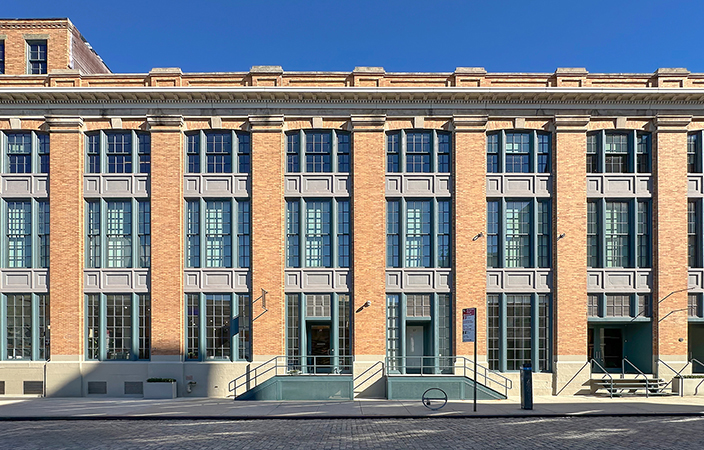News:
Brokerage
Posted: September 26, 2007
The subprime market and cap rates: Why did this happen and what overall effect will it have?
The recent subprime crisis has certainly made the headlines in recent weeks. Delinquencies /foreclosures are up and even some large mortgage related companies are downsizing or are near bankruptcy. Both governor Spitzer and president Bush want to institute legislation and funding which will protect homeowners from foreclosures. governor Spitzer's immediate program proposes to fund $100 million in NYS subsidies to homeowners. According to a number of commercial real estate brokers a number of prime properties will be held off the market until the immediate subprime fallout has passed. Why did all this happen and what effect will it have on overall capitalization rates?
One of the first lessons I had in the business world was from an old banker who worked for a now extinct savings and loan almost 35 years ago. He said, "Home construction is the backbone of a local economy." It has applicability to many economies especially in upstate New York. I have observed this phenomenon during the housing highs of the early 1970s, mid-1980s, the early 1990s and in the time period of 2002-2004. During these time periods the demand for materials, labor, loans, service professionals was high. Construction workers, construction material distributors, service professionals, etc. were also making substantial wage/salaries. This produced some tremendous multipliers throughout the entire local and regional economy. The decline of manufacturing has been ongoing in the northeast U.S. since the early 1970s. Manufacturing traditionally has thrown off the biggest multipliers of most jobs. The federal reserve had a policy of relatively low interest rates over the past six years. It appears that in order to make up for the loss of manufacturing jobs, the federal reserve realized the offset could be to keep the local economies stimulated with low mortgage rates and therefore large demand for housing. This substantiates my earlier statement that local home construction is the "backbone" of the local economy.
Before the recent housing downturn, nationally there were large price increases due to high demand and relatively low supply. This produced some reaction by the federal reserve to increase rates. However, as time went on an oversupply resulted from overbuilding which depressed prices. The combination of increasing rates, less loan availability decreasing housing prices feeds upon itself to produce the part of the subprime crisis we currently are in. Those borrowers in the subprime market are the most vulnerable because their loan to value and debt service/income ratios were high to begin with especially those with adjustable rate mortgages. The defaults have become high and the subprime crisis has escalated.
The good news is based upon quotes from some upstate bankers. The impact on delinquencies will not be substantial, since upstate New York markets have generally been conservatively underwritten because of relatively low appreciation. In areas of high appreciation such as downstate New York the effect can be more substantial However, there has been many checks and balances put in place since the savings and loan crisis in the 1980s during the Reagan administration. In addition, at least in downstate New York high paying technology jobs are still plentiful. In fact, downstate New York and northern New Jersey still have over 600,000 high paying technology jobs. The fallout from this current subprime crisis will not have the severity of the 1980s savings and loan debacle. The biggest effect will be both higher mortgage interest rates and less availability of credit. This will increase overall rates. Given the relatively slow growth of values in upstate, the overall cap rate effect will be minimized. But it will be significant. Apartment complexes have general cap rates of 7-9.5%; office buildings at 8-10%; shopping centers at 7.75-9.75%. Industrial properties of 8.25%-10.5%. Downstate New York has general apartment cap rates of 4.75-8%; office buildings at 5.75-8.5%; shopping centers at 5.25-8%; and industrial properties of 6-9%. There is some more potential for increases in the short run. In summary, the recent subprime crisis will have minimal long range effects on cap rates in NYS.
John Rynne, MAI, SRA, is the president and owner of Rynne, Murphy & Associates, Inc., Rochester, N.Y.
Tags:
Brokerage
MORE FROM Brokerage
SABRE coordinates sale of six properties totaling 199,845 s/f
Huntington, NY SABRE Real Estate Advisors has completed the sale of six commercial properties across Long Island and Northern New Jersey, further underscoring the firm’s strength as a trusted partner in complex real estate transactions. The deals were led by executive vice presidents Jimmy Aug and Stu Fagen, whose combined expertise continues to drive exceptional results for clients across the region.

Quick Hits
Columns and Thought Leadership

Strategic pause - by Shallini Mehra and Chirag Doshi
Many investors are in a period of strategic pause as New York City’s mayoral race approaches. A major inflection point came with the Democratic primary victory of Zohran Mamdani, a staunch tenant advocate, with a progressive housing platform which supports rent freezes for rent

Lasting effects of eminent domain on commercial development - by Sebastian Jablonski
The state has the authority to seize all or part of privately owned commercial real estate for public use by the power of eminent domain. Although the state is constitutionally required to provide just compensation to the property owner, it frequently fails to account

Behind the post: Why reels, stories, and shorts work for CRE (and how to use them) - by Kimberly Zar Bloorian
Let’s be real: if you’re still only posting photos of properties, you’re missing out. Reels, Stories, and Shorts are where attention lives, and in commercial real estate, attention is currency.

Lower interest rates and more loan restructuring can help negate any negative trending of NOI on some CRE projects - by Michael Zysman
Lower interest rates and an increased number of loan restructurings will be well received by the commercial real estate industry. Over the past 12 months there has been a negative trend for NOI for many properties across the country.







.jpg)
.gif)
.gif)